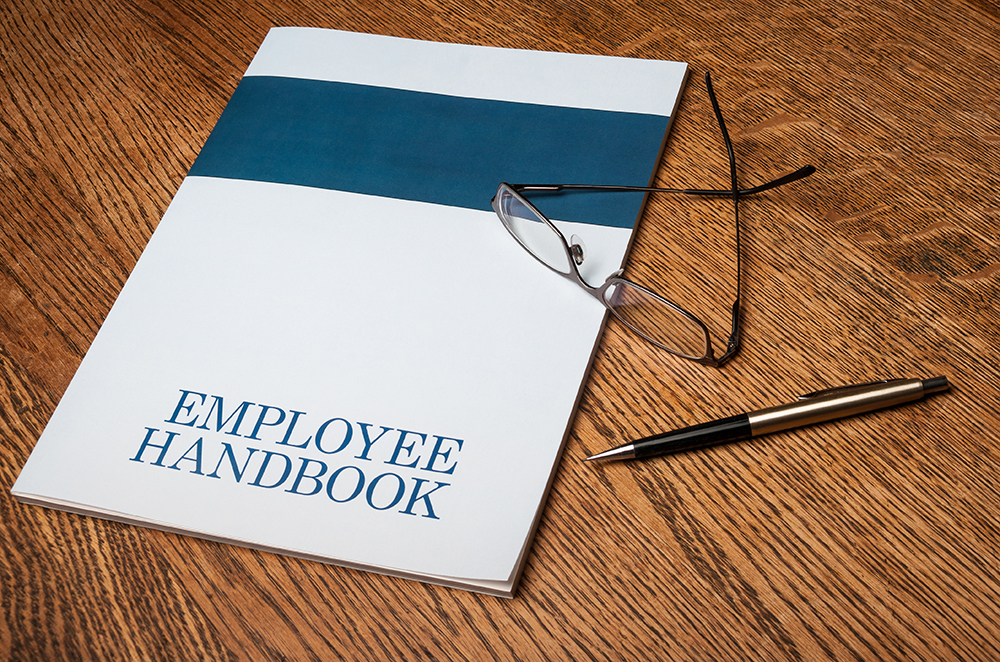As Human Resources Consultants at Milestones HR, LLC we often get asked, “We’re a small business, do we really need an Employee Handbook?” It’s a great question, as small businesses enjoy being nimble and are normally tight-knit with their employees.
Those same two reasons are good reasons why having an Employee Handbook makes good business sense.
 When an employer has a practical set of guidelines that match the way they do business and their culture, those guidelines take the “whose asking” question out of the equation.
When an employer has a practical set of guidelines that match the way they do business and their culture, those guidelines take the “whose asking” question out of the equation.
For instance, what if you have an employee with multi-years of service with your company, who needs a personal leave of absence to care for their spouse who has a serious health issue? You don’t offer Family Medical Leave (FMLA) because your company is under 50 employees. You’d like to give them an unpaid leave of absence, but you don’t plan to pay for their health insurance or let their paid time off (vacation/sick leave) accrue while they’re off. You work out an agreement with the employee, and while they’re a bit upset their benefits get paused, they’re grateful for the leave. Now, what happens if another employee, whose only been with the company for 6 months, asks for a similar leave? Is the leave automatically granted? Or, do you use an Employee Handbook to set criteria around requesting a personal leave of absence, so it is clear cut when you’ll consider the request and what the parameters are?
Another way we’ve witnessed this play out is an employee asks for a personal leave of absence using Family Medical Leave. That one is easy you say, we don’t offer FMLA. Well, what if you downloaded another bigger Company’s Employee Handbook and used that swift find and replace function to write your Employee Handbook? Now, it says you offer FMLA, and you don’t – there’s a whole other issue to unravel. We’ve seen it dozens of times.
The only thing worse than not having an Employee Handbook is having one that a company doesn’t actually practice.
One of my favorites was a client intake meeting about the Employee Handbook at the client’s office. When I got to my question about if they consume any alcohol on their premises or at a company events, I was immediately told: “absolutely not.” After a brief pause, I reminded them that I’m not there to judge them and want to write an Employee Handbook that truly represents their culture. Crickets. I smiled and said, “is that a bar with a sheet draped over it behind me?” We all started laughing. It sure was! While I appreciated that my investment in looking youthful was paying off, that one was hard to miss! We wrote an Employee Handbook that talked about alcohol consumption at work or at company events, and put some safety nets in for them. They didn’t have to change who they are or how they did business (or social events), we just needed to plan for it.
Easy peasy. And, we still laugh about it today.
Finally, an Employee Handbook, written with a Company’s tone and brand is a great welcome for a new hire. It signals to them that they’re joining an organized, well  thought out Company. One of the policies often missed by Companies is if they can use their employees in their Company social media. What if a new employee would like to opt-out of that but doesn’t want to be “that employee” right out of the gate? A good policy lets them opt out gracefully.
thought out Company. One of the policies often missed by Companies is if they can use their employees in their Company social media. What if a new employee would like to opt-out of that but doesn’t want to be “that employee” right out of the gate? A good policy lets them opt out gracefully.
Be Proactive
An Employee Handbook won’t solve for the unwritten rules like, don’t heat up fish in the microwave with the air intake vent for the building located overhead. That said, it will proactively solve for a lot of “what if” scenarios before the questions are ever asked.
Are you ready to revisit or create an Employee Handbook? If so, reach out to us! We’ll make it painless and in under 10 hours, you’ll have a custom Employee Handbook that we can either roll out for you or you can roll it out and take all of the credit! From there, it’s easy updates as needed.
By: Angie Addison, SHRM-CP, PHR

